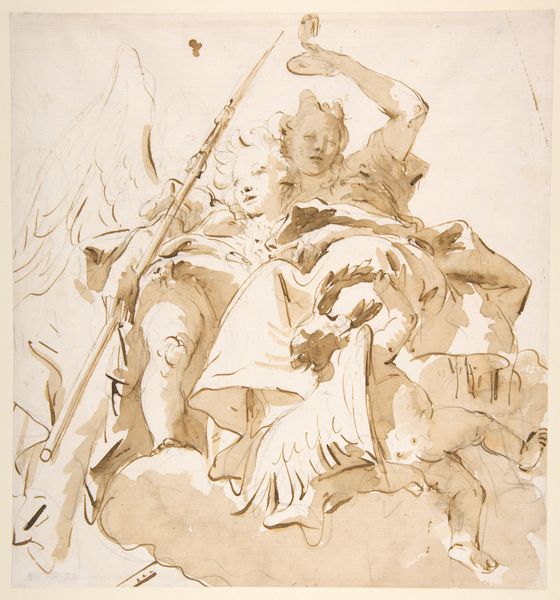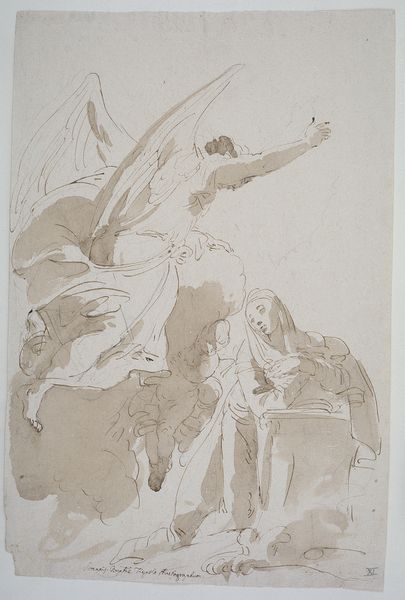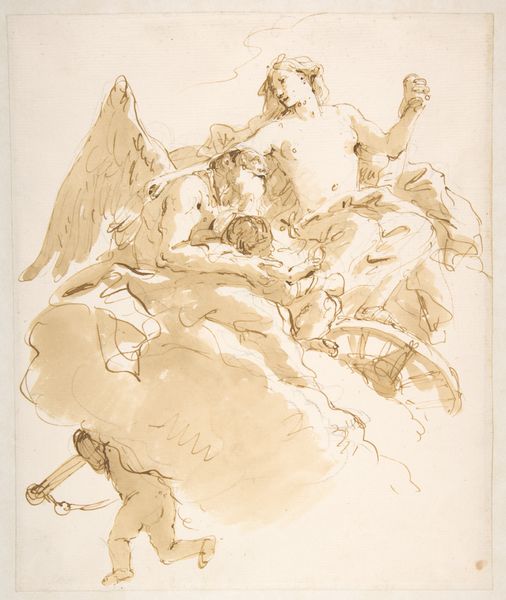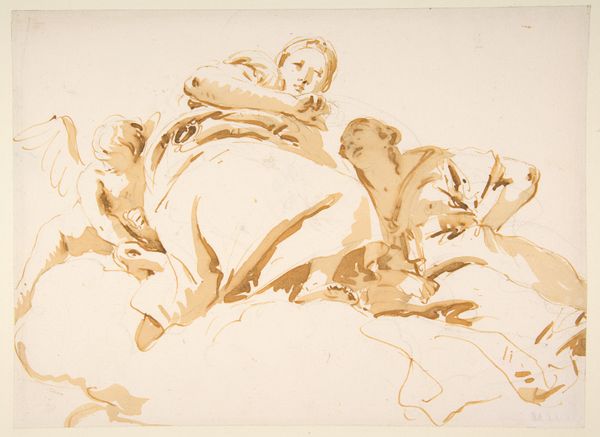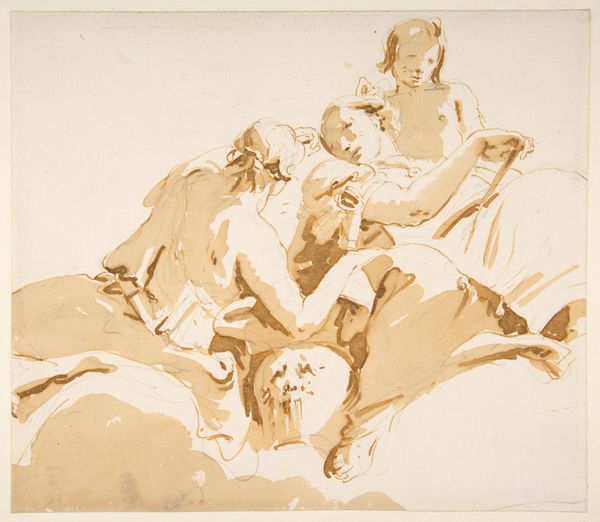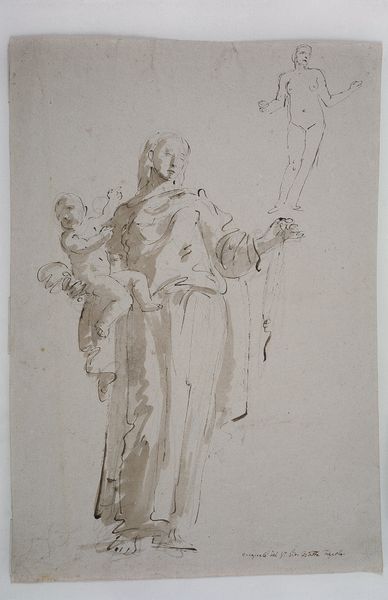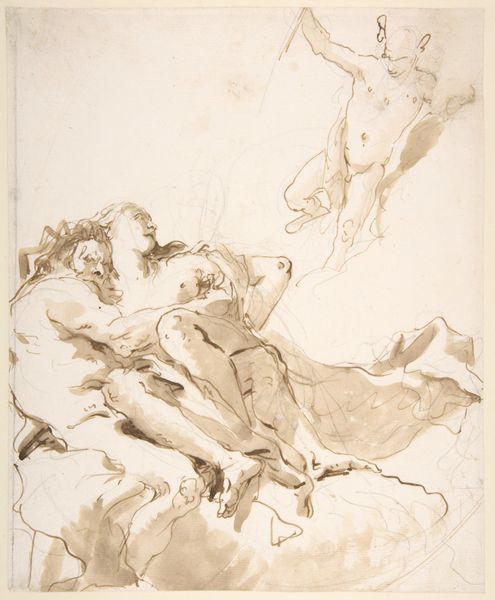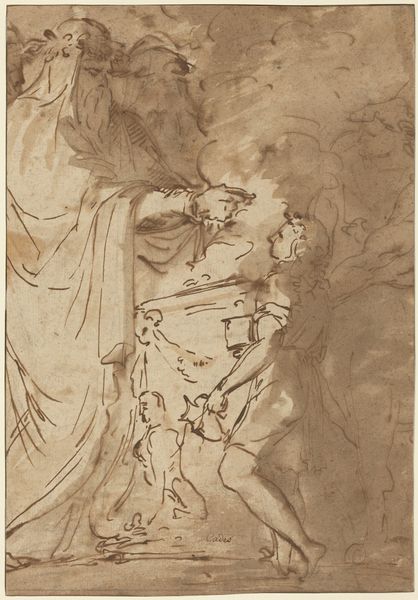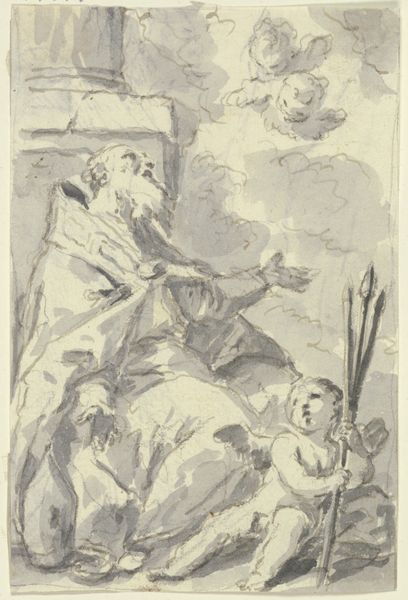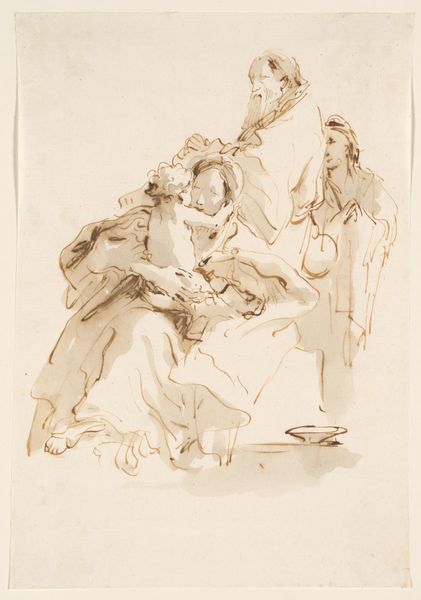
Seated Women Holding Aloft a Sword, and Supported by Two Putti 1696 - 1770
0:00
0:00
drawing, print, paper, ink
#
drawing
#
allegory
#
baroque
# print
#
pencil sketch
#
charcoal drawing
#
figuration
#
paper
#
ink
#
pencil drawing
#
history-painting
#
academic-art
Dimensions: 10-1/16 x 8 in. (25.6 x 20.3 cm)
Copyright: Public Domain
Curator: Let's examine "Seated Women Holding Aloft a Sword, and Supported by Two Putti," an ink and wash drawing on paper by Giovanni Battista Tiepolo, dating roughly between 1696 and 1770. Editor: It has a dreamlike quality. The composition floats, figures emerging from clouds of ink, and there is a distinct tension between serenity and latent violence. Curator: Indeed. Tiepolo was working within the grand tradition of allegorical history painting. Considering the era's sociopolitical context, the sword represents power and justice, while the seated woman, elevated by putti, likely embodies an abstract concept like virtue or noble governance. Editor: Visually, the putti introduce a dynamic symbolic weight to this image, contrasting the traditionally gendered representations of authority that, throughout time, excluded people that look like the children, that could perhaps provide care and assistance. The woman's weary posture is particularly striking; this representation disrupts a certain gender performance that one could relate to this kind of symbolic elevation. Curator: I agree. The artist presents us with established conventions only to subtly subvert them. Consider the flowing robes—typical of Baroque art, but here, they seem almost to weigh the figure down, symbolizing the burden of responsibility that goes along with power, and what could mean to be gendered with those specific codes and burden in the sociopolitical sphere. Editor: And the sword itself... it appears almost too heavy for her. I’m drawn to the ambiguousness this ambiguity represents, suggesting an invitation to re-think the symbolic relationship with power and, more specifically, with gender representation itself. This creates, in my perspective, a link to similar discussions of gender and performance we have today. Curator: It’s remarkable how Tiepolo uses classical allegorical language to comment on contemporary social and political issues in very interesting new ways. The drawing compels us to rethink how systems of power and justice might fail in societies ruled by strict performative and structural forms. Editor: Agreed. Its delicate rendering is compelling, but even more powerful is its ability to open questions on topics that persist to this day.
Comments
No comments
Be the first to comment and join the conversation on the ultimate creative platform.
